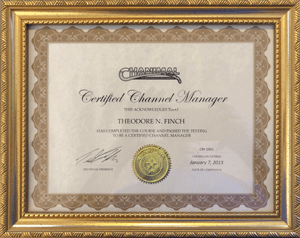Strategic Planning
A portion of The Marketing Plan incorporates Strategic Planning. This is the process when top management establishes the long-term direction of an organization. The basic steps in strategic planning include
- Assessing the organization’s environment and resources
- Defining the organization’s mission and purpose,
- Establishing the priority of organizational objectives, and
- Selecting the organizational strategies.
Environment & Resources
This refers to an evaluation of the uncontrollable variables (i.e., political changes, competition, new technology) and the financial and intellectual resources within a company. Is a law going to stamp out Internet phones, is Microsoft going to invade our space, do we have the talent to go where we choose, do we have the cash flow to survive?
The Technology Adoption Life Cycle
This must also be addressed within this section of the plan to ensure that the recommended tactics are appropriate for the intended target audience (to determine whether that audience is in the Innovators, Early Adopters, Early Majority, Late Majority or Laggards segment). The last thing that should be done is to apply the wrong tactical approach during the wrong adoption phase (i.e., consumer advertising when in the Innovator stages, versus beefed up pr and seeding campaigns).
Mission and Purpose
It is critical not to have a “strategy of the week” which occurs when a company can’t identify and decide a target customer. The overall company mission, incorporated into the plan, must clarify the areas of specialty that the corporation should pursue. Everything else should then line up with that mission.
Organizational Objectives
If the company is planning to grow, they may have to change its organizational structure–these suggested changes are often outlined in The Plan. Most new organizations have to change their organizational structure during growth from a small team of generalists (in marketing one person does PR, advertising, events, etc.) to a coordinated team of specialists. This is the stage (often between the 70 – 120 person range) when many companies experience their first taste of politics as people resist giving up responsibility–often resulting in an impasse.
This is the stage when many companies experience their first taste of politics…
At this stage, the company cannot move to the next level unless it regroups, specializes (either by training existing people to be specialist or hiring outside (determined by the speed of growth)) and then apply a more sophisticated management style to coordinate the larger team.
Included below is a link to a typical marketing organization. To see how each member interrelates, click on the position and you can view a corresponding job description. This specific example shows an optimal organizational structure as a company transitions between the generalist to the specialist stage (from 70 to 120 people). Later, as the department “plumps,” there is further diversification, often forming a hybrid.
Click HERE to view the Marketing Organizational Chart
Organizational Strategies
These strategies describe changes in the target market and any changes in the product (either by development or support) and cover both growth or consolidation. Selecting an organizational strategy may require some research but the conclusions should be included in The Marketing Plan. This exercise ensures that a company doesn’t just carry on when a change is critical, or decide to get rid of a product before its time.
Growth Strategies
These describe methods for the organization to expand by either A) market penetration (increasing growth by lowering prices, increasing the sales force, advertising, etc.), B) product development (new products for new customer needs), C) market development (find new markets for existing products, i.e., foreign) and D) diversification (developing both new products for new markets).
Consolidation Strategies
These include:
- Harvesting (a gradual decrease in resources to support a product, i.e., not advertising a stable but non-growth product)
- Pruning (eliminate conflicting product lines, i.e., reducing the three Windows products down to two)
- Retrenchment (offer the same line but retrench to the strongest line, i.e., still offer the DOS apps but only develop Windows apps), and
- Divestment (sell off products that don’t “fit” the business core competencies, i.e., sell off print cartridges, and keep software).
NEXT >

